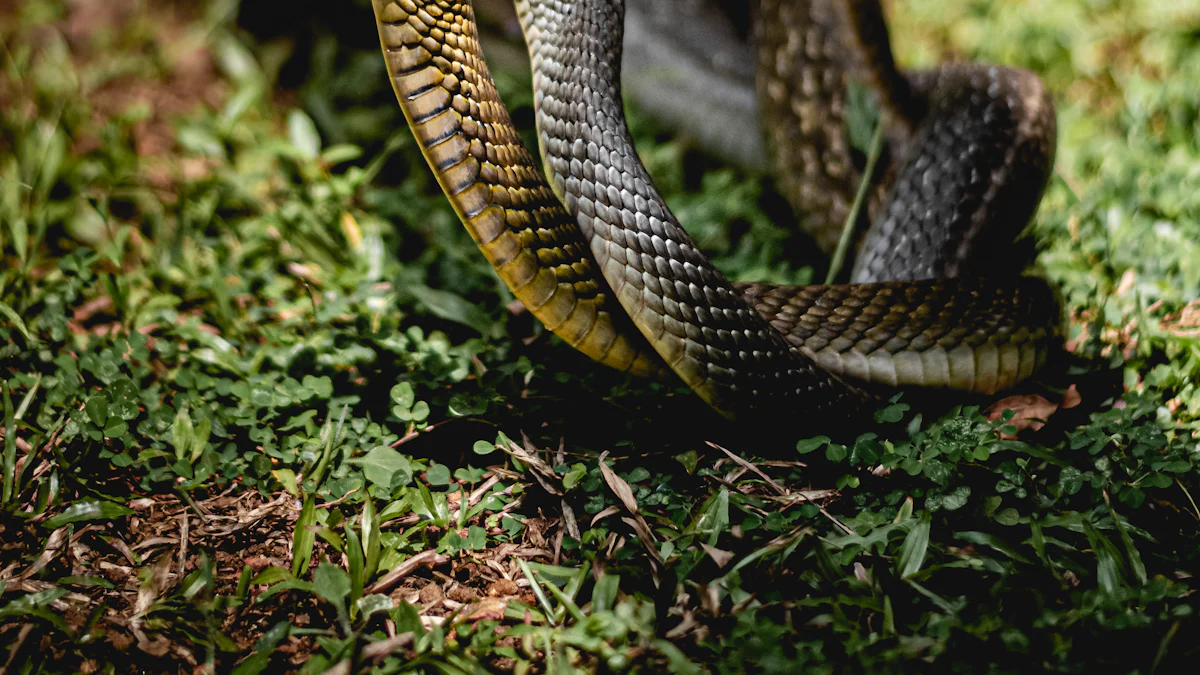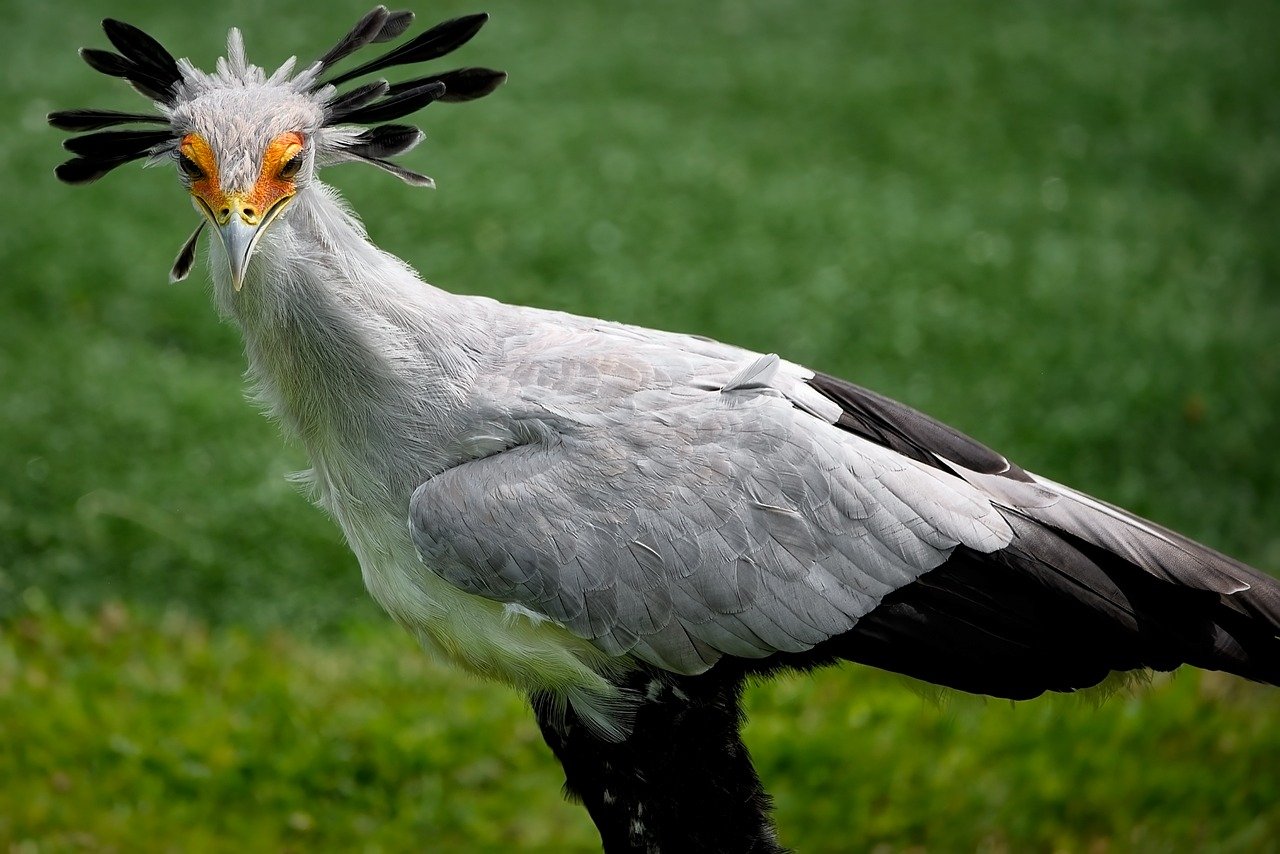
Imagine a face-off between two of nature's most fascinating creatures: the Secretary Bird and the Western Diamondback rattlesnake. You might wonder who would come out on top in this thrilling showdown. The Secretary Bird, with its long legs and powerful kicks, can deliver a force equivalent to five times its body weight. This bird doesn't just peck at its prey; it stomps with precision and speed, immobilizing snakes in mere milliseconds. On the other hand, the Western Diamondback rattlesnake, known for its venomous bite, poses a formidable challenge. So, in a secretary bird vs snake encounter, who do you think would win?
Meet the Contenders

The Secretary Bird

Physical Characteristics
When you first see a Secretary Bird, its striking appearance might catch your eye. This bird stands tall with long, slender legs that give it an impressive height of up to four feet. Its wingspan stretches over six feet, allowing it to glide gracefully through the air. The Secretary Bird's head resembles that of an eagle, with a hooked beak perfect for tearing into prey. Its plumage is mostly gray and white, with black feathers adorning its wings and tail, adding to its majestic look.
Habitat and Behavior
You can find Secretary Birds roaming the open savannas and grasslands of sub-Saharan Africa. These birds prefer wide, open spaces where they can spot their prey from a distance. Unlike many other birds of prey, Secretary Birds hunt on foot. They walk through the grasslands with a deliberate, stalking gait, scanning the ground for snakes and other small animals. Their hunting style is unique and effective, making them formidable predators in their environment.
Strengths and Weaknesses
The Secretary Bird's strengths lie in its powerful legs and precise hunting techniques. It can deliver a kick with a force of 195 Newtons, equivalent to five times its body weight. This incredible strength allows it to subdue even the most dangerous snakes in milliseconds. However, its reliance on open habitats can be a weakness. In dense forests or areas with limited visibility, the Secretary Bird might struggle to hunt effectively.
The Western Diamondback Rattlesnake
Physical Characteristics
The Western Diamondback Rattlesnake is a creature that commands respect. It can grow up to seven feet long, with a thick, muscular body covered in diamond-shaped patterns. Its head is triangular, housing venomous fangs capable of delivering a potent bite. The rattlesnake's tail ends in a distinctive rattle, which it uses as a warning signal to potential threats.
Habitat and Behavior
You might encounter the Western Diamondback Rattlesnake in the arid deserts and rocky terrains of the southwestern United States and northern Mexico. These snakes are masters of camouflage, blending seamlessly into their surroundings. They are primarily ambush predators, lying in wait for unsuspecting prey to wander too close. When threatened, they coil defensively and rattle their tails to deter attackers.
Strengths and Weaknesses
The rattlesnake's primary strength is its venomous bite, which can incapacitate prey quickly. Its ability to blend into its environment makes it a stealthy hunter. However, its reliance on ambush tactics can be a disadvantage against agile and alert predators like the Secretary Bird. Once exposed, the rattlesnake's defensive strategies may not be enough to fend off a determined attacker.
Secretary Bird vs Snake: The Secretary Bird's Hunting Techniques

Unique Hunting Methods
Speed and Agility
When you watch a Secretary Bird in action, its speed and agility stand out. This bird doesn't just walk; it strides with purpose across the savanna. Its long legs allow it to cover ground quickly, making it a master at surprising its prey. You might find it fascinating how it can close in on a snake before the reptile even realizes it's in danger. This quick approach is crucial in a secretary bird vs snake encounter, where every second counts.
Precision Strikes
The Secretary Bird's hunting technique relies on precision. With a powerful kick, it can deliver a blow with 195 Newtons of force, equivalent to five times its body weight. Imagine the impact of such a strike! This forceful kick targets the snake's head or body, immobilizing it instantly. You can see why this method is effective against even the most venomous snakes. The bird's accuracy ensures that it avoids the snake's fangs, keeping itself safe from harm.
Effectiveness Against Snakes
Historical Encounters
Throughout history, Secretary Birds have earned a reputation as formidable snake hunters. They have been known to take down cobras, black mambas, and other dangerous species. Their scientific name, which means "the archer of snakes," reflects this prowess. You might find it intriguing how these birds have adapted over time to become experts in dealing with such perilous prey.
Adaptations for Snake Hunting
The Secretary Bird's adaptations make it a specialized predator. Its long legs not only provide speed but also keep its body at a safe distance from the snake's strike zone. You might notice how it uses clever strategies, like distracting the snake before delivering a lethal kick. These adaptations allow the bird to hunt without any immunity to venom, relying solely on its physical prowess and tactical approach.
In the wild, the secretary bird vs snake showdown showcases nature's incredible adaptations and strategies. You can appreciate how this bird has evolved to become a top predator in its environment, using its unique skills to thrive.
Secretary Bird vs Snake: The Hypothetical Showdown
Scenario Analysis
Initial Encounter
Picture this: a vast savanna where the Secretary Bird spots a Western Diamondback rattlesnake. You can almost feel the tension in the air. The bird approaches with its signature stride, eyes locked on the snake. The rattlesnake, sensing danger, coils defensively. This initial encounter sets the stage for a classic predator-prey interaction.
Battle Dynamics
In this secretary bird vs snake showdown, dynamics play a crucial role. The Secretary Bird relies on its speed and agility. It circles the snake, looking for an opening. You might notice how the bird uses its long legs to maintain a safe distance. Meanwhile, the rattlesnake waits for the perfect moment to strike. Its defensive posture and rattle serve as warnings. This dance of strategy and instinct highlights the complexity of their interaction.
Potential Outcomes
Secretary Bird's Advantages
The Secretary Bird has several advantages in this encounter. Its powerful legs deliver lethal kicks, capable of subduing the snake quickly. You can see how its height keeps it out of the snake's reach. The bird's precision strikes target the snake's head, minimizing risk. These traits make the Secretary Bird a formidable opponent in any secretary bird vs snake battle.
Snake's Defensive Strategies
The rattlesnake, however, isn't without its defenses. Its venomous bite poses a significant threat. You might find its camouflage ability fascinating, allowing it to blend into the environment. This stealth can catch predators off guard. The snake's coiled position and rattling tail act as deterrents, buying time to escape or strike back.
In this hypothetical secretary bird vs snake showdown, both creatures showcase nature's incredible adaptations. You can appreciate how these encounters reveal the intricate dynamics of predator-prey relationships. Each has evolved unique strategies, making every encounter a thrilling spectacle.
In the thrilling secretary bird vs snake showdown, you see nature's incredible balance at play. The Secretary Bird, with its powerful legs and precise strikes, often emerges victorious. Its agility and hunting prowess make it a formidable predator. Meanwhile, the Western Diamondback rattlesnake relies on its venomous bite and camouflage for defense. This interaction highlights the complex predator-prey dynamics that maintain ecological stability. You witness how these creatures, each with unique adaptations, contribute to the harmony of their ecosystems. Nature's wonders never cease to amaze, reminding you of the intricate dance of survival.
If you're passionate about birds, we invite you to explore more articles on our blog. Discover a wealth of topics that inspire and inform by visiting our blog list page. Join us in celebrating the beauty of nature and the importance of protecting our avian friends!












